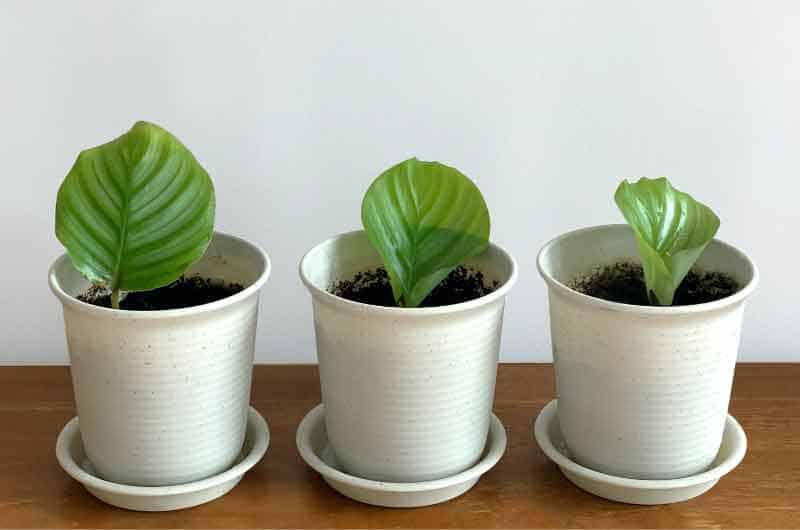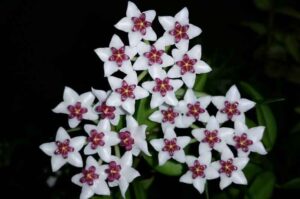Why Is My Calathea orbifolia Turning Brown?
The large oval leaves with silver grooves make the Calathea orbifolia plant a perfect candidate for your offices, lobbies, and other interior spaces of the house. But these guys need specific routine care, otherwise, they show different types of stress symptoms just like leaves turning brown. In this article, we are going to discuss the issues for which your Calathea orbifolia leaves are turning brown.
Overwatering, underwatering, and overexposure to sunlight are the major issues for which your Calathea orbifolia is turning brown. Apart from them, a few other problems, that causes the brown leaves in Calathea orbifolia are low humidity and temperature levels, pest attack, and use of poor quality of water for irrigation.
There are a lot of issues that cause the brown leaves in Calathea orbifolia. You should know each of them. so that you can easily figure out the issue with your plant. And that is exactly what we will be discussing today in this post.
Without any further delay, let’s head off to the causes and their precautions.

Improper watering habits
Calatheas are known for being fussy and difficult to care for. One of the most prevalent reasons for browning Calathea orbifolia leaves is insufficient watering.
This plant can be highly disturbed by both overwatering and underwatering. Excess moisture is the most common cause of Calathea orbifolia turning brown.
Let’s check the two common watering problems-
Overwatering
When there is too much water in the soil, it is referred to as overwatering. Overwatering clogs the soil’s air holes. This deprives the roots of getting oxygen. Due to the lack of oxygen, the roots start to rot, which makes a key component in the browning of leaves.
Some other problems related to Overwatering are:
- The pot has fewer drainage holes.
- The plant is kept in a dark, low-light environment.
- Your Calathea is growing in a big pot. The soil takes longer to dry, resulting in sogginess.
- Soil that is poorly drained.
How to prevent overwatering in Calathea Orbifolia
By adopting the following measures, you can prevent your Calathea orbifolia from overwatering.
- Pick a potting soil that drains properly. It will allow excess moisture to swiftly leave, avoiding a waterlogged condition.
- Water the plant when only the top two inches of soil is completely dry.
- Select a pot with adequate drainage holes. It will aid in the removal of excess water from the root zone.
- Keep your plant in a location that receives a lot of indirect light, from mild to bright.
Taking care of your Calathea plants and preventing them from overwatering will immediately show the results and your plant will start to grow some new fresh and green leaves.
You may also like the article- How to care for your Calathea orbifolia – A complete guide
Underwatering
Overwatering blocks pores and air gaps in the soil, whilst underwatering dehydrates the plant. Calathea leaves can become yellow if they are consistently submerged. Leaves also turn brown when the soil does not receive the least quantity of water that is necessary.
Dehydration in a Calathea manifests itself in the following symptoms.
- Curl the leaves to prevent water loss from transpiration.
- Leaves will start drooping.
- Brown spots emerge around the margins of the leaves.
- The leaves will turn yellow.
Even if you are doing this for the first time, finding the ideal soil balance is not difficult. To get started, you can use these easy approaches.
How to prevent underwatering in Calathea orbifolia
- Check to see if the soil’s top layer has dried out. See if the soil is damp or not by pressing your finger down approximately 1-2 inches or by using a moisture meter for more precision. You can also use a 3 in 1 soil moisture, pH, and light tester.
- The soil might dry out too quickly in a terra cotta pot. One effective solution for that is to use a moisture-retaining plastic pot. Put that inside a decorative pot with no drainage holes or you can use a pebble tray.
- To raise the inner planter, add a layer of pebbles to the bottom of the outer pot. This offers a drainage room while also adding moisture to the air surrounding the leaves.
- The addition of cocopeat to the potting soil will add to the water holding capacity, preventing the risk of water shortage. You can make cocopeat at home, or buy online.
- When watering, lightly wet the soil, but water more thoroughly once in a while and let the pot drain for 10 minutes or so. As a result, make sure the pot you’re using has plenty of drainage holes.
By correcting the watering habits, you can see easily notice some significant changes in your Calathea orbifolia plant growth.
You may also like this article- How do self-watering pots work? Complete working principle of Self-watering pots.
Overexposure to Sunlight
You might be shocked to learn that Calatheas dislike being in direct sunlight.
When exposed to direct sunshine, Calathea loses its color. The intense sunlight can burn their leaves in a short period. As they require moist soil for optimal growth, direct sunshine will cause the soil to dry up.
Leaves will be all yellow and crisp up quickly if they are suddenly moved to a sunny location.
Does Calathea need sunlight?
Yes, like all plants, Calathea also needs sunlight. But it shouldn’t be direct. Calatheas loves bright indirect sunlight. A place well lit with diffused sunlight is ideal for Calathea orbifolia.
It can also tolerate low light conditions up to some extent.
How do I know if my Calathea is getting too much sun?
When your Calathea is getting too much light, it will show various symptoms like burning leaves, drooping, and drying of plants, and the potting soil will dry up too quickly.
The beautiful foliage of your Calathea plant will lose its color and luster when exposed to too much sunlight.
How to prevent a Calathea orbifolia from overexposure to sunlight?
Following are the measures that will prevent your Calathea orbifolia plant from overexposure to sunlight. These points will help you to analyze where you should put your Calathea?
- Keeping your plants a little further away from your windows is a great idea to prevent the falling of direct sunlight on your Calathea orbifolia leaves. The intensity of sunshine decreases dramatically as the distance from the window increases.
- Another option is to place a sheet of transparent curtains between your plants and the sunshine. This will keep the sun from directly hitting their foliage.
- Avoid placing your Calathea orbifolia near a South-facing window and instead plant it near a North-facing window.
Providing a good lighting condition will not only accelerate your plant growth, but it will also help to provide a good color to your plant foliages.
Low humidity levels
Calatheas demand greater humidity levels and a consistent climate throughout the year. The leaves turn brown when the humidity falls below 50-60%.
Calathea orbifolia requires more than 50% humidity to thrive. The typical moisture content of indoor air is usually too low for Calatheas. It definitely needed to be corrected.
Should you mist Calathea?
Yes, you can mist your Calathea plant. But it is not a permanent solution to meet the humidity requirement of your Calatheas.
Spraying mist and adjusting the ambient humidity are two entirely separate circumstances. Misting offers just temporary hydration by wetting the leaves for a brief period. Fixing the humidity, on the other hand, increase the moisture content of the surrounding air.
How to maintain a humid environment for the Calathea plant?
- A humidifier is a simple technique to enhance the humidity of the surrounding air where it is planted. One can be found online or in a local store.
- Many people also put their Calathea on top of stones or peat moss that has been immersed in water. A humidity tray, sometimes known as a pebble tray, is used for this. The water evaporates throughout the day, maintaining a high level of humidity. If you want to use this approach, make sure you change the water often to avoid bacterial development.
- You can get a better idea about a pebble tray by watching this video.
- The third technique is to divide your plants into groups. Transpiration is the mechanism through which plants release water vapor into the atmosphere. This provides moisture to the air and keeps the humidity level consistent, which is good for the plants.
Temperature stress
Calathea plants dislike being in the cold. Temperature, in addition to sunshine, has an essential influence.
Indoors, Calathea orbifolia houseplants thrive under average room temperatures. Maintain a consistent temperature range of 65°F to 75°F (18°C to 24°C) for your Calathea orbifolia plants (all tropical plants) to grow.
The most difficult aspect of growing Calatheas inside is during the summer and winter.
How to keep your Calathea orbifolia away from temperature stress?
Here are two important solutions for your Calathea orbifolia plant to prevent temperature stress.
- Keep them away from chilly draughts like the air conditioner or open windows. Keep the Orbifolia plant container away from radiators throughout the winter.
- In the summer, Calathea orbifolia plants can be grown in pots outside. The potted tropical plant may be grown in a shady area in your garden as long as the temperature does not fall below 60°F.
Poor Water Quality
It’s critical to have good water quality if you want your plants to develop new leaves. This is because Calathea plants are extremely sensitive to an excess of minerals in the water.
It is not advisable to use hard water. You can judge if the water you’re using is hard or soft by looking at the plant. When there is an excess of minerals in the water, the leaves become brown.
Salts, chlorine, minerals, and fluoride are all found in tap water. They can build up in the potting soil of your plant, causing the tips of the leaves to burn and become brown.
How to avoid poor water quality in Calathea orbifolia?
- The prime recommendation is to use distilled water. Because it has a lower salt content. Since many people have had success growing Calathea plants using distilled water.
You may also like- Calathea Musaica (Network)- Care guide
Improper Use of Fertilizers
Calathea plants don’t need fertilizer in most cases. Light weekly fertilization will supply your Orbifolia plant with the minerals and nutrients. During the spring, summer, and fall, they require extra fertilizer to blossom. Organic feeding is an excellent choice since it prevents root damage.
Too much fertilizer in the soil can cause the Orbifolia roots to be burned and the leaves to become brown. Between feedings, give the soil a good soaking to avoid excess mineral accumulation.
How to make balanced use of fertilizer for Calathea orbifolia?
- Choose an all-purpose balanced fertilizer, which you can buy at your local garden center or online. Always keep in mind, don’t overuse the fertilizer.
- Apply dry fertilizer a few inches away from the plant’s root to give yourself a safety margin.
- Apply a modest dosage of a nitrogen-rich foliage fertilizer once or twice a month.
- You can also make homemade fertilizers for your Calathaeas.
Disease and pest attack
If your Calathea leaves have speckled discoloration or are crisping, drying, or browning, you may need to use the magnifying lens. There’s a risk the plant has been invaded by unwanted guests!
The following are some of the most prevalent offenders:
- Spider mites: They adore Calatheas and are regular visitors who may quickly become a nuisance. Because they like dry air, infestations are more common in the winter.
- Gnats of fungus: When the soil is continuously wet, they appear. The larval stage is harmful to your plant because the larvae eat the roots of your plant.
- Scale: If the leaves of your Calathea have a sticky substance on them, then this is a work of scale. Honeydew is excreted by scales to feed the ant colonies that guard them. Scale appears on the plant as brown or greyish pimples.
- Mealybugs: This is the worst of all. These cottony-looking tiny beetles prefer to hide in the cracks of leaves and stems. It drains the life out of your Calathea.
How to prevent your Calathea orbifolia plant from pest attack?
Following measures can prevent pest attacks.
- Increase the humidity and give your plant leaf showers on a regular basis for spider mites.
- For gnats of fungus allow the soil to dry out a little more is the first stage. If it doesn’t work, make a solution with one part of 3 percent hydrogen peroxide and four parts of water and apply it to the soil.
- You can use an insecticide or remove the scale manually using a cotton bud soaked in rubbing alcohol.
- To get rid of mealybugs, use neem oil or go straight to the insecticide.
Natural shedding of lower leaves
As plants will grow naturally, lower leaves will reabsorb nutrients more. Which in return, turns the leaves yellow, then crispy and brown before dropping.
This is typical, so as long as it’s simply the lowest leaves that are browning and not at an alarming rate, you’ll be OK.
Solutions
- Remove any yellow or brown leaves from your plant.
- Only cut them if they’re more than 50% damaged.
- Removing brown leaves is important as it keeps the remaining foliage healthy.
Final words
Calathea orbifolia, despite its beauty; may be difficult to keep up with. However, you should not be concerned. All you have to do is be a little more cautious, watchful, and kind to these natural wonders.
With proper care, these exotic houseplants may grow up to 3 feet (0.9 m) in height. The lustrous leaves can reach a width of 1 foot (30 cm). And you’ll be able to witness nature’s beauty bloom before your eyes.






